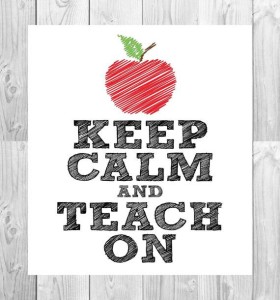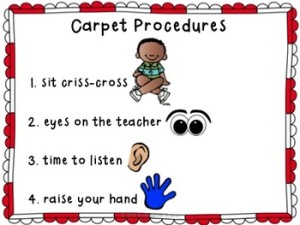In response to Mrs. Knights Marbles, about “that kid”, I wanted to share my story.
Yes, I said it. I definitely have “that kid” in my classroom. We have all had “that kid”, and its been probably one of the most challenging years of our careers, but we always manage to pick up the pieces day-in and day-out and survive another year with “that kid”. Because we care so much about “that kid”, and want to make their year in school a successful one, we are constantly wracking our brains on how we can make a difference. Of course there are times when we are spread so thin, and we feel like we can’t face another day with the behaviors from “that kid”. Such as on Sunday night after a great weekend, or driving to school when all you have are your thoughts comsuming your overwhelmed brain, or maybe right before the bells rings, or when they stroll in 20 minutes late with a late pass in hand as they grin ear-to-ear at us and the rest of the class, we get that “feeling” in our gut, (you all know what I’m talking about!) like you just can’t even deal! However, we are all professionals, and our teacher-mode kicks in, and we KNOW we are here to make a difference for all kids, even “that kid”.
Here are some of my experiences with “that kid” and how I created a positive classroom environment for everyone. For my story I will call him “Michael”. This is not the actual student’s name.
After the honeymoon period
Time for an intervention
Training the rest of the class
Keep calm and teach on
As the year goes on
Join the newsletter
Sign up for exclusive freebies and teaching tips here!









This really spoke to me! I had "that kid" last year, and I had the same experience of public crying in the lounge (which is so not my nature!). In fact I cried many days last year, and some days it took everything I had to simply walk through my classroom door knowing what I would have to deal with all day. Your advice is spot on!
I'm glad you enjoyed this post! Public crying can be so embarrassing, but sometimes we just can't avoid it! I hope this year you catch a break 😉 It can be so tough.
I really needed to read this article this morning! Even though I am an experienced teacher, I needed to hear all of the totally accurate things you had to say. Thank you so much!
I have just had the week subbing in a class with that kid……I have just become the go to sub for that class….I really don’t know if it makes me happy or a little terrified. My kiddo has ODD (Op-positional defiance disorder) and a 5 he can be a little scary but at the same time very sweet. I has been a very long week for me and I am shattered. I know with teaching you are always on the ball, but with this kiddo it is taken up to another level. I have used some of your approaches with some success over the last week, but I think I will take even more on board when I go back in a weeks time for another weeks subbing. I’ll keep chanting in my head, positivity, positivity…… thank you for sharing some things that worked for you.
Oh man! Subbing is so hard, good for you for going back again! I was a sub for awhile before getting my teaching certificate. I know it’s not easy. Good luck!
Oh my goodness…I have ‘that kid’ this year, and I’m feeling so lost (My students are all 4). We’ve been in school for 5 weeks and he’s already been suspended for punching another kid in the face! He knocked the principal down on the playground, after he ran out of class. He throws things, he’s hit me, he kicks and bites and is just generally rough with EVERYONE. I’ve cried so many times because I just feel like I can’t handle anymore and it breaks my heart. Your advice is amazing and I’m hoping to use some of the same techniques when he transitions back to his full-day status. (We’re on a modified schedule because of the punching incident.)
Gosh, I’m so sorry to hear all that you are going through! I’m glad I could help 🙂 Hang in there!!!!!
So this year I have 4 of “that kid”! I’m not sure how I’m going to make this year!
One day at a time!!! I hope things get better for you. You can do it!!
thank you so much for this article. We have one of those kids and it is really hard. He has melt downs about twice a week. But those meltdowns are twice too many. Thanks for the ideas and encouragement.